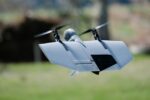In a rare public disclosure of its nuclear command infrastructure development, China’s People’s Liberation Army (PLA) has reportedly conducted trials of advanced simulation systems designed to support simultaneous nuclear strike planning. The effort appears focused on enhancing the decision-making speed and coordination capability of China’s strategic rocket forces under high-intensity conflict scenarios.
Simultaneous Nuclear Strike Planning: A Strategic Shift
The reported tests were carried out by engineering units affiliated with the PLA Rocket Force (PLARF), formerly known as the Second Artillery Corps. These units evaluated a suite of digital tools for planning multiple concurrent nuclear strikes across different theaters. The system reportedly integrates real-time data fusion, target prioritization algorithms, and simulated adversary responses to enable synchronized launch planning under time-constrained conditions.
This marks a significant shift in Chinese nuclear doctrine from traditional minimum deterrence toward a more flexible response posture. While China officially maintains a no-first-use (NFU) policy, recent doctrinal publications suggest growing emphasis on readiness for rapid retaliation and survivable second-strike capabilities. The ability to coordinate simultaneous strikes would enhance credibility of China’s deterrent by complicating adversary missile defense planning.
Command-and-Control Enhancements via Digital Simulation
The test campaign reportedly involved the use of software-defined simulation environments that replicate operational conditions such as electromagnetic interference (EMI), degraded communications networks, and satellite denial scenarios. Engineers assessed how well command elements could maintain situational awareness and issue coordinated launch orders in these contested conditions.
According to Chinese military media sources such as PLA Daily and CCTV-7’s “Military Report”, the trial included stress-testing new digital decision-support tools that incorporate artificial intelligence (AI) modules for threat assessment and strike optimization. These tools are believed to be part of broader efforts to modernize China’s C4ISR (Command, Control, Communications, Computers, Intelligence, Surveillance and Reconnaissance) infrastructure across both conventional and strategic forces.
Integration with Strategic Forces and Mobile Missile Units
The PLARF operates a diverse inventory of land-based ballistic missiles ranging from short-range DF-15s to intercontinental DF-41 ICBMs capable of carrying multiple independently targetable reentry vehicles (MIRVs). Many are deployed on road-mobile transporter erector launchers (TELs), complicating enemy targeting efforts.
The new simulation systems appear designed to integrate with mobile launch platforms by providing dynamic targeting updates based on evolving battlefield intelligence or satellite reconnaissance data. This would allow field commanders greater autonomy while preserving centralized control through secure communication links—an approach consistent with China’s emphasis on “informatized” warfare.
Strategic Implications Amid Rising Tensions
The timing of these developments is notable amid heightened tensions in the Indo-Pacific region. U.S. Department of Defense reports have warned that China may be expanding its silo-based ICBM infrastructure—particularly in Gansu and Xinjiang provinces—and increasing its warhead stockpile beyond previous estimates.
In 2023, the Pentagon assessed that China likely possessed over 500 operational nuclear warheads—up from approximately 200 just five years earlier—and could reach 1,000 by 2030 if current trends continue. Enhancing digital coordination tools for strategic forces aligns with this trajectory toward a more robust triad-like posture centered around land-based assets.
Nuclear Doctrine Evolution or Signaling?
While official Chinese statements continue to emphasize NFU policy adherence and minimal deterrence principles, these technical developments suggest preparations for more complex operational contingencies—including counterforce options or limited theater use under certain thresholds. Analysts remain divided on whether this represents doctrinal evolution or signaling intended to deter perceived encirclement by U.S.-led alliances such as AUKUS or Quad.
- Key concerns: increased risk of miscalculation due to faster decision cycles enabled by AI-driven C2 tools;
- Potential benefits: improved survivability through mobility + distributed command nodes;
- Uncertainties: extent of real-world integration between simulation environments and deployed missile units remains unclear.
This development underscores growing convergence between digital warfare technologies and nuclear force posture—a trend not unique to China but increasingly visible across all major powers modernizing their strategic arsenals.
Conclusion: Simulated Deterrence Meets Real-World Escalation Risks
The PLA’s investment in advanced simulation-based planning tools for simultaneous nuclear strikes reflects both technological ambition and shifting strategic calculus. While framed as exercises in resilience under pressure, these tests raise questions about escalation thresholds in future conflicts involving peer adversaries equipped with comparable capabilities.
If confirmed at scale across PLARF units, such systems could mark a step-change in how China envisions using its nuclear arsenal—not just as last-resort retaliation but potentially as an integrated component within broader multi-domain campaigns requiring rapid coordination across dispersed assets.








